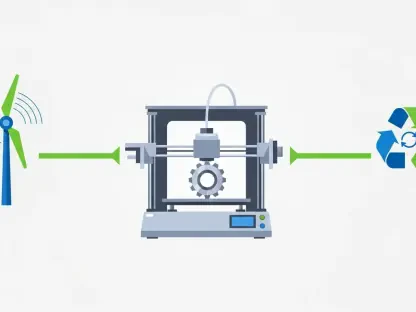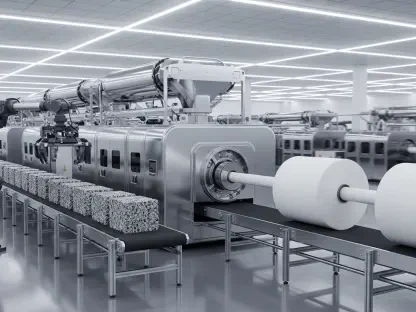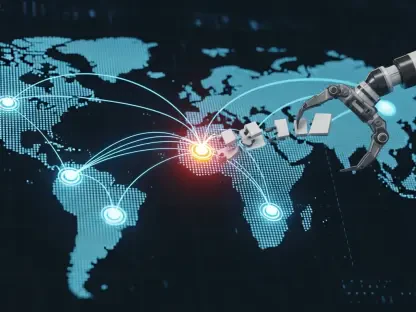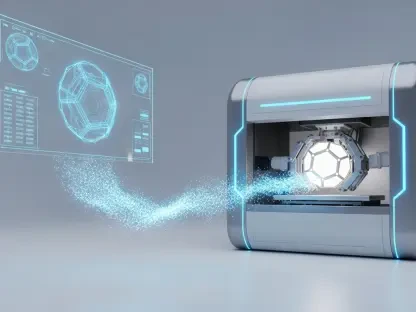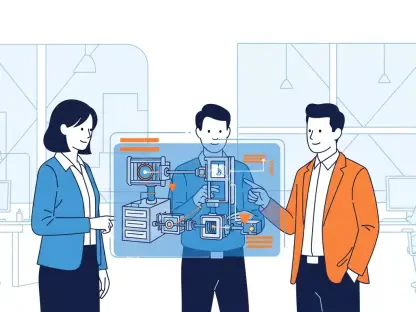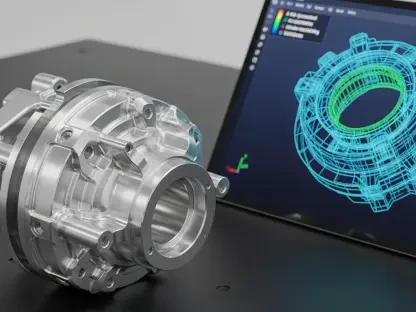Unveiling the Power of Digital Twins in Automotive Innovation
Imagine a world where every vehicle on the road has a perfect virtual counterpart, mirroring its every move, predicting its failures, and optimizing its performance in real time. This is no longer a distant vision but a reality shaping the automotive industry today through digital twin technology. With commercial vehicle manufacturers in markets like India grappling with unprecedented complexity in design and sustainability demands, digital twins offer a groundbreaking solution. These virtual replicas are transforming how vehicles are engineered, tested, and maintained, slashing development timelines and enhancing efficiency. This review dives deep into the capabilities of digital twins, exploring their features, real-world impact, and the challenges they face in revolutionizing the automotive sector.
Core Features and Technical Capabilities
Defining the Digital Twin Framework
At its essence, a digital twin is a dynamic virtual model of a physical vehicle, continuously updated with real-time data to simulate behavior and performance. This technology integrates vast streams of information from sensors and systems, creating a closed-loop feedback mechanism that refines accuracy over time. By replicating mechanical, electrical, and thermal interactions, digital twins enable engineers to analyze multi-domain complexities on a unified platform. Their significance lies in addressing the escalating intricacy of vehicle design, especially with diverse fuel technologies ranging from electric to hydrogen.
AI-Enhanced Predictive Simulations
One of the standout features of digital twins is their ability to leverage artificial intelligence for predictive simulations. This capability allows designers to foresee potential issues—such as component wear or energy inefficiencies—long before physical prototypes are built. Industry metrics indicate that this approach can reduce prototyping time by up to 40%, significantly accelerating development cycles. For instance, simulations have optimized electric vehicle range by fine-tuning regenerative braking systems, demonstrating measurable gains in efficiency and cost savings.
Seamless Data Integration for Real-Time Insights
Another critical strength is the seamless integration of real-world data into virtual models, forming a continuous feedback loop. This process captures live inputs from vehicles in operation, refining digital representations to mirror actual conditions with precision. Applications include optimizing AdBlue consumption for emissions compliance in diesel engines and enhancing battery cooling mechanisms in electric vehicles. Such data-driven insights ensure that designs evolve dynamically, aligning with operational realities and regulatory standards.
Performance and Real-World Impact
Transforming Commercial Vehicle Development
In the commercial vehicle segment, digital twins have proven instrumental in managing the diversity of fuel options and customer-specific configurations. Companies like Volvo Eicher Commercial Vehicles have harnessed this technology to streamline fuel diversity, ensuring adaptability across electric, diesel, and alternative fuel platforms. By simulating various scenarios, manufacturers can tailor vehicles to precise market needs, reducing waste and enhancing performance without extensive physical testing.
Broader Applications Across the Industry
Beyond engineering, digital twins extend their influence into manufacturing, sales, and after-sales services, fostering a connected enterprise. AI-driven insights derived from these models optimize production processes under the Industry 5.0 paradigm, while data analytics inform sales strategies by predicting customer preferences. In after-sales, virtual twins enable predictive maintenance, minimizing downtime by identifying issues before they escalate. This holistic integration underscores their versatility in enhancing operational efficiency.
Innovations Driving Adoption
Recent advancements in cloud-based tools and Model-Based Systems Engineering platforms, such as 3DEXPERIENCE, have further propelled the adoption of digital twins. These innovations facilitate concurrent engineering, allowing cross-disciplinary teams to collaborate simultaneously and iterate designs rapidly. Additionally, the democratization of advanced tools through cloud access empowers smaller suppliers to engage in sophisticated simulations, leveling the competitive landscape and fostering broader industry collaboration.
Challenges and Barriers to Overcome
Technical and Security Hurdles
Despite their promise, digital twins face significant technical challenges, particularly in modeling diverse fuel technologies with accuracy. Ensuring that virtual models account for the nuances of electric, hydrogen, and diesel systems requires immense computational power and expertise. Moreover, with data often hosted on cloud platforms, security concerns around protecting proprietary information remain paramount. Robust encryption and access controls are essential to mitigate these risks.
Regulatory and Market Constraints
Navigating regulatory landscapes poses another obstacle, especially in markets like India where safety and sustainability standards are evolving rapidly. Aligning digital twin outputs with compliance requirements demands constant updates and validation. Additionally, market acceptance hinges on overcoming cultural resistance within organizations, as traditional workflows give way to digital-first approaches. This transition necessitates investment in training and change management.
Skill Gaps and Organizational Shifts
A critical barrier lies in the shortage of skilled personnel capable of leveraging digital twin technology effectively. Many engineering teams require upskilling to harness AI-driven tools and interpret complex simulation data. Alongside this, a cultural shift toward embracing digital workflows is vital for successful implementation. Organizations must foster an environment that prioritizes innovation over conventional methods to fully realize the potential of these systems.
Reflecting on the Journey of Digital Twins
Looking back, the journey of digital twins in the automotive industry marked a pivotal shift in how vehicles were designed and maintained. Their ability to mirror physical assets with uncanny precision streamlined development, cut costs, and elevated sustainability in commercial vehicle manufacturing. As challenges like technical complexity and data security were tackled, the technology paved the way for smarter, safer designs. Moving forward, stakeholders needed to prioritize skill development and robust cybersecurity measures to sustain momentum. Collaboration across OEMs, suppliers, and regulators promised to unlock even greater potential, ensuring digital twins continued to drive efficiency and innovation in an ever-evolving landscape.


